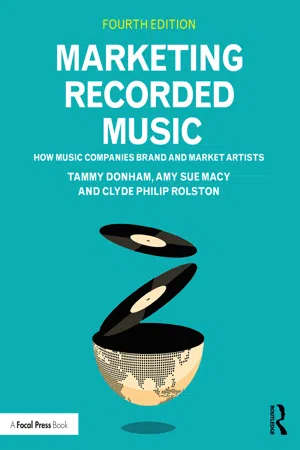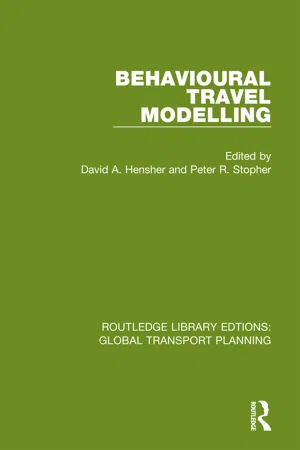Economics
Market Segmentation Theory
Market Segmentation Theory suggests that financial markets are made up of different groups of investors with different investment preferences, risk tolerances, and information sets. These groups are segmented based on factors such as age, income, and investment goals, and each group has its own supply and demand for securities, which affects the prices of those securities.
Written by Perlego with AI-assistance
Related key terms
Related key terms
1 of 4
Related key terms
1 of 3
3 Key excerpts on "Market Segmentation Theory"
- eBook - ePub
Marketing Recorded Music
How Music Companies Brand and Market Artists
- Tammy Donham, Amy Sue Macy, Clyde Philip Rolston(Authors)
- 2022(Publication Date)
- Focal Press(Publisher)
On the most basic level, music markets can be segmented into three sections: (1) current fans, (2) potential fans, and (3) those people who are not now, nor ever likely to be, fans. Perhaps this third group includes people who do not particularly care for the genre that your artist represents. It may include people who do not consume music, people who are unwilling or unable to pay for music, or those without access to become consumers. For example, if I don’t have a computer or Internet access, I am not part of iTunes’s target market. Businesses focus on the first two groups.Market Segmentation
Because most markets are so complex and composed of people with different needs, wants, and preferences, markets are typically subdivided so that promotional efforts can be tailored to fit the particular submarket. For most products, the total potential market is too diverse or heterogeneous to be treated as a single market. One need only walk the lot of the local car dealership or the aisles of the local grocery store to see that we have come a long way from the days of Henry Ford’s Model T in any color you want “so long as it’s black.” To solve this problem, markets are divided into smaller, more homogeneous sub-markets. Market segmentation is defined as the “process of dividing a market according to similarities that exist among the various subgroups within the market. The similarities may be common characteristics or common needs and desires” (Dictionary of Marketing Terms, 2000). The members of the resulting segments are similar with respect to characteristics that are most vital to the marketing efforts. This segmentation may be made based on demographics, behavior, geography, psychographics, or some combination of two or more of these characteristics.The process of segmenting markets is done in stages. In the first step, segmentation variables are selected, and the market is separated along those partitions. The most appropriate variables for segmentation will vary from product to product. The appropriateness of each segmentation factor is determined by its relevance to the situation. After this is determined and the market is segmented, each segment is then profiled to determine its distinctive demographic and behavioral characteristics. Then the segment is analyzed to determine its potential for sales. If the segment meets the criteria for successful segmentation (subsequently), the company’s target markets are chosen from among the segments determined at this stage. If the segments do not meet the criteria, the process can be repeated, looking at different segmentation variables. - eBook - ePub
- David A. Hensher, Peter R. Stopher, David A. Hensher, Peter R. Stopher(Authors)
- 2021(Publication Date)
- Routledge(Publisher)
Market-segmentation procedures are relevant at several unique levels of analysis in addition to having the potential for direct application to transport policies. Segmentation can be used to reveal actual and/or anticipated traveller responses to alternative classes of transport services and facilities. It is also possible to assess for non-travellers potential and/or experienced benefits and disbenefits within a market segmentation framework. At a more aggregate level, geographic regions within an urbanised area, such as travel-analysis zones, can be grouped to demonstrate the existence of alternative transport requirements for different parts of an area. At even further levels of aggregation, it is possible to cluster entire urbanised areas into market segments which are likely to react in common ways to the demonstration and testing of innovative transport services, facilities and managements actions. Finally, various transport policies can be partitioned into segments which are likely to have common impacts with respect to travellers, non-travellers, implementation and operation costs, and other transport decision-making criteria.Market segmentation has evolved from marketing research and theory. Central concepts from this body of literature are reviewed briefly with the aim of showing the relevance of market segmentation to transport analysis and policy-making. Prior applications and discussions of market-segmentation approaches in transport planning and research literature are also reviewed. In addition, various technical issues relating to segmentation-model specification, clustering algorithms and tests of significance for different market segmentations are mentioned. These reviews point out policy-relevant information which can be produced through a segmentation approach and procedures for deriving that information. The reviews are not meant to be exhaustive with respect to any body of literature but rather to suggest concepts which are discussed in varied bodies of literature. A series of specific transport applications that are suitable for a market-segmentation orientation are defined and elaborated in a section which builds upon the information base developed in prior sections. It is hoped that the great promise of segmentation procedures for transport analysis and policy-making are highlighted through the contrasting of its policy-relevant and technical aspects.Concepts from Marketing Research and Theory
Defining Market Segmentation
Market segmentation is predicated on two key concepts. The first one is that meaningful groups of users of a product or service can be identified. The second one revolves around the creative assessment of product and/or service requirements for different market segments. The objective of this activity is usually to maximise profits through rendering services and/or products which appeal strongly to lucrative market segments. Market segmentation, as traditionally used in business contexts, always refers to a market mechanism. - eBook - ePub
International Marketing (RLE International Business)
A Strategic Approach to World Markets
- Simon Majaro(Author)
- 2013(Publication Date)
- Routledge(Publisher)
Chapter 4Market Segmentation on a Global Scale
The Meaning of Market Segmentation
The concept of market segmentation has triggered the imagination of many marketers during the last decade. It is a strategy which enables the firm to maximise the results of a given marketing effort by exploiting clearly identified strengths in relation to a submarket which is either inadequately satisfied by other manufacturers or where the firm is particularly well placed to do an effective job.Every marketer recognises that it is not possible to satisfy the specific needs and requirements of every consumer. It is necessary to deal with groups of consumers or clusters of individuals who manifest similarities in consumption habits, social behaviour, economic characteristics or in some other distinguishable criterion. The extreme logical choices for the marketer are either to focus his attention on a wisely selected subgroup or submarket or to aim to differentiate the marketing programme so as to satisfy the largest number of heterogeneous members of the total market. The former option is economical and if well planned highly effective; the latter can be costly but in terms of sale volume probably much more substantial. At the same time one must not forget that concentration on specific submarkets can be fraught with vulnerability; differentiation, on the other hand, whilst more costly as an approach, avoids the risk of ‘placing all one's eggs in one basket’. It is not possible to determine which is the more appropriate policy for a specific situation without knowing all the pertinent facts surrounding the firm's circumstances and the characteristics of the marketplace in question. However, one of the basic decisions that a company must take in its marketing planning activity is whether it proposes to adopt a market segmentation policy or a market aggregation
Index pages curate the most relevant extracts from our library of academic textbooks. They’ve been created using an in-house natural language model (NLM), each adding context and meaning to key research topics.
Explore more topic indexes
Explore more topic indexes
1 of 6
Explore more topic indexes
1 of 4


